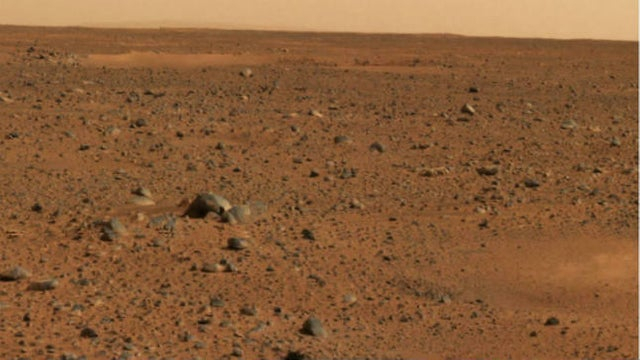BY Mark R. Whittington
Basking in the afterglow of the flight of Apollo 11, NASA set out to examine possibilities for a post-Apollo space program. The Nixon administration had commissioned a study conducted by the Space Task Group comprised of NASA engineers to assess what could be done given the development of Apollo-era technology. The Space Task Group’s report, delivered in September 1969, was breathtaking in its scope and ambition.
The proposals envisioned a space infrastructure that included a 50 to 100-person space station, a smaller space station in lunar orbit, and a 25-person moon base. These facilities would be serviced by a reusable space shuttle and a reusable “space tug” that would take people and cargo from low Earth orbit to the moon.
The plan envisioned an expedition to Mars to take place in the early 1980s, using a nuclear-powered rocket. The first humans would have landed on the Red Planet sometime in 1982.
The Space Task Group proposals contained three options. The first proposal had the first human landing on Mars in the early 1980s. It envisioned a NASA with a budget of $10 billion in 1969 dollars, about $70 billion in today’s money. The second option required a slightly smaller NASA budget and envisioned the first Mars landing in 1986. The third deferred the Mars landing indefinitely.
The White House accepted the recommendations and then ignored them. The only part of the report implemented in the real world was the space shuttle, which turned out to be a little short of totally reusable. NASA was compelled to defer the space station, which turned out to be much smaller than envisioned, until President Ronald Reagan proposed it in the mid-1980s.
Why did America retreat from what might have been a brilliant age of space exploration?
Large, well-funded space adventures did not poll well. As an article in Space.com reported, public support for the Apollo program only rose above 50 percent about the time Neil Armstrong made his first footstep on the moon.
Many in Congress wanted to cut NASA’s budget severely and use the money to fund social programs. Politicians such as Sen. Walter Mondale (D-Minn.), Sen. William Proxmire (D-Wisc.), and, irony of ironies, Sen. Teddy Kennedy (D-Mass.) inveighed against space exploration on the floor of the Senate.
President Richard Nixon, no doubt noting this opposition, could not find a reason to support the ambitious program set out by the Space Task Group. As a result, we have not been back to the moon since 1972, not to speak of seeing humans on Mars.
The United States embarked on a decades-long experiment on whether government spending could alleviate the ills of poverty. In the War on Poverty, poverty won after trillions of dollars were spent.
What would have been the wider effects on the United States if something like the Space Task Group’s recommendations had been implemented? A study conducted by Chase Econometrics and released in 1976 provides a clue:
The principal findings of this part of the study are that a sustained increase in NASA spending of $1 billion (1958 dollars) for the 1975-1984 period would have the following effects:
1) Constant-dollar CNP would be $23 billion higher by 1984, a 2% increase over the ‘baseline,’ or no-additional-expenditure projections. Constant-dollar CNP would be $23 billion higher by 1984, a 2% increase.
2) The rate of increase in the Consumer Price Index would be reduced to the extent that by 1984 it would be a full 2% lower than indicated in the baseline projection.
3) The unemployment rate would be reduced by 0.4% by 1984, and the size of the labor force would be increased through greater job opportunities so that the total number of jobs would increase by an additional 0.8 million.
4) By 1984 productivity in the private non-farm sector would be 2.0% higher than indicated in the baseline projection.
As physicist Brian Cox noted, for every $1 spent on the Apollo program, $14 made its way back into the economy. The Space Task Group program would have been a more effective anti-poverty program than anything the political class dreamed up. Imagine the economic effects the extra spending on space exploration would have caused.
By throwing away what was won during the Apollo program, the United States lost what would have been a glorious last third of the 20th century, filled with prosperity, scientific discoveries, and a better standing in the world. That is the definition of a tragedy.
Mark Whittington is the author of space exploration studies “Why is It So Hard to Go Back to the Moon? as well as “The Moon, Mars and Beyond.”
More about: #NASA
















































